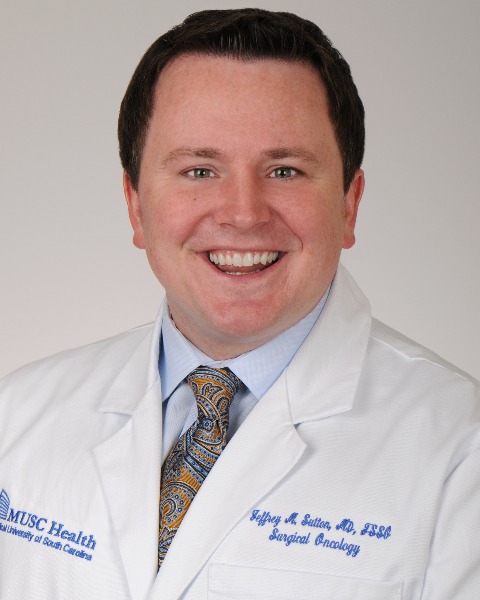Disparities in Surgical Oncologic Care
E157: Disparities in Insurance Status Are Associated with Surgical Approach Offered for the Treatment of Esophageal and Gastric Malignancies

Macelyn Batten, DO (she/her/hers)
General Surgery Resident
Medical University of South Carolina
MOUNT PLEASANT, South Carolina, United States
Macelyn Batten, DO (she/her/hers)
General Surgery Resident
Medical University of South Carolina
MOUNT PLEASANT, South Carolina, United States- AD
Alexander Didier, BS
Medical Student
University of Toledo College of Medicine, United States - RM
Rupak Mukherjee, PhD
Assistant Professor
MUSC, United States 
Andrea Abbott, MD MSCR FACS (she/her/hers)
Associated Professor
Medical University of South Carolina, United States
Jeffrey M. Sutton, MD, FACS, FSSO
Assistant Professor of Surgery
Medical University of South Carolina
Charleston, South Carolina, United States
Jeffrey M. Sutton, MD, FACS, FSSO
Assistant Professor of Surgery
Medical University of South Carolina
Charleston, South Carolina, United States
ePoster Abstract Author(s)
Author(s)
Submitter(s)
Author(s)
Although open resection has historically been the most common oncologic surgical approach in the curative-intent treatment of various gastrointestinal malignancies, the use of minimally invasive surgical techniques is increasing. Recent studies have demonstrated that insurance status may affect the type of surgical approach patients are offered. We hypothesized that uninsured patients are offered minimally invasive surgical (MIS) resection of esophageal and gastric cancers less often than insured patients.
Methods:
The National Cancer Database (NCDB) was queried to identify patients who underwent surgery for either esophageal or gastric cancer from 2004 through 2020. Patients were stratified based upon insurance status (uninsured vs. insured, which included private and government insurance) and operative approach (open vs. MIS, which included laparoscopic and robotic techniques). Multivariate logistic regression analyses were performed to compare likelihood of operative approach based on insurance status.
Results: A total of 115,098 patients were identified, of which 2,728 (2.37%) were uninsured. Operative approach was split between open (n=56,105 [48.75%]) and MIS (n=58,993 [51.26%]) techniques. The majority of MIS patients underwent laparoscopic surgery (n=48,695 [42.31% of the entire cohort]) while the remainder underwent robotic-assisted surgery (n=10,298 [8.95%]). Compared to patients with insurance, uninsured patients were significantly less likely to be offered MIS approaches (OR 0.51, 95% CI [0.43, 0.60], p< 0.001). Further stratified by disease site, these differences persisted: uninsured patients were less likely to undergo MIS esophagectomy (OR 0.53, 95% CI [0.38 – 0.74], p< 0.001) or MIS gastrectomy (OR 0.54, 95% CI [0.45 – 0.65], p< 0.001). After controlling for demographic factors such as sex, race, comorbidities, facility type, income and education status, uninsured patients were significantly still less likely to undergo MIS procedures compared to insured (OR 0.58, 95% CI [0.53 - 0.63], p< 0.001).
Conclusions:
The present study identifies disparate delivery of surgical care based upon patient insurance status, with uninsured patients being offered MIS esophagectomy or gastrectomy approximately half as often as insured patients. With the increasing ubiquity of minimally invasive surgical techniques for the surgical treatment of cancer, it is important to both acknowledge and address this disparity when offering the optimal surgical approach to ensure equal access and healthcare opportunities to all patients.
Learning Objectives:
- cite the breakdown of minimally invasive vs open gastrectomies and esophagectomies performed nationally.
- define the proportion of uninsured patients receiving surgical care nationally.
- discuss the role insurance status plays in determining which approaches are offered to patients.
